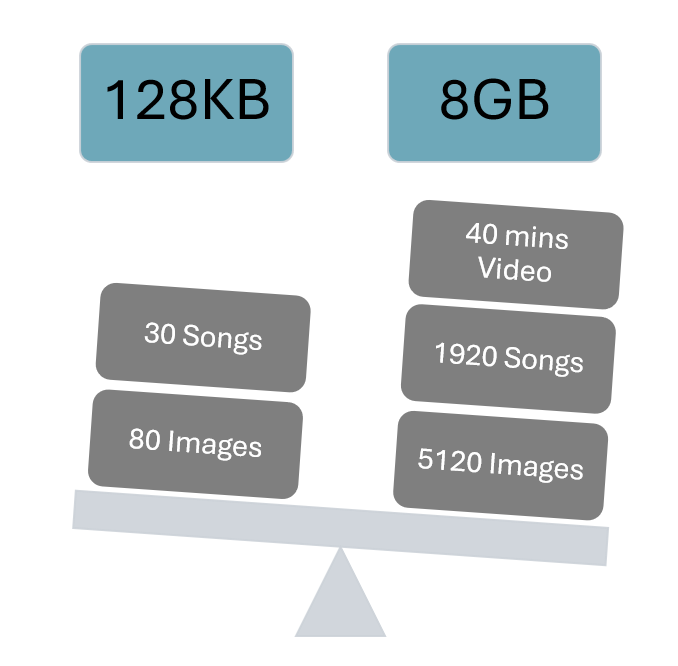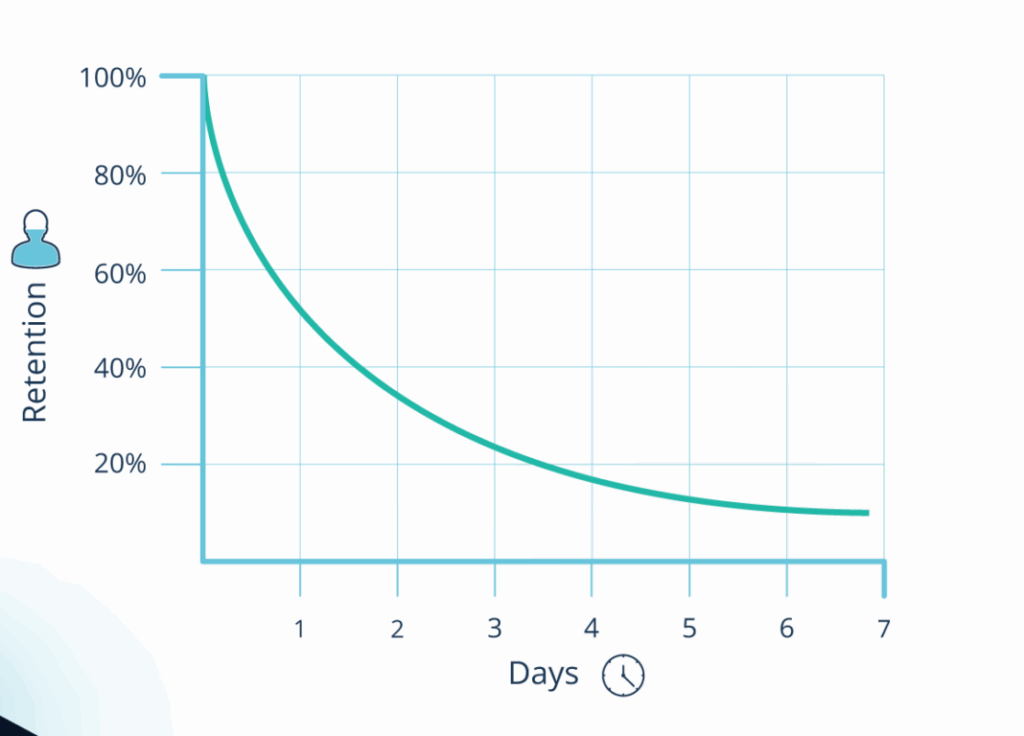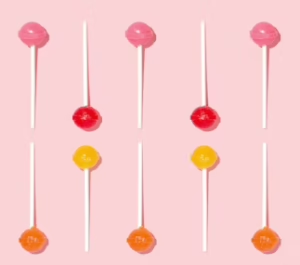How do you succeed when playing Spot It, or Go Fish, or Solitaire? Or any other kind of memory game? It’s all about what you can remember, and when. Outside of game night, it’s also the key ingredient on the audience side of a marketing message. Will people remember, and will they remember it at the right time?
This aspect of marketing is called mental availability, or situational awareness. People being aware of your brand isn’t enough. You need people to remember it at critical decision-making moments.
All marketing builds toward one critical day. The day your audience remembers you and acts. How does knowing this affect how media strategists approach planning?
What is Memory?

In the 1960s, as scientists tried to understand human memory, computer engineers were inventing RAM, the first “working memory” for machines. That parallel stuck. The result was ‘working memory’ and theories that compared the mind to a computer. Because what is a computer if not an external brain?
Just like the early RAM capabilities, human working memory has a limited capacity.

For example, the original iPhone had 128MB of RAM. That’s 80 images.
We’ve been able to maximize the external brain’s ability up to 8GB on the latest iPhone. Which is 5,120 images. That is a whopping 62.5 times greater than 18 years ago!
Computers have advanced a lot in almost 20 years. How about human brains?
Humans are typically thought to be able to handle seven elements, either digits, letters, or words. Phone numbers, grocery items, and brand names are examples. It remains the same, around that seven-element threshold. Some even go so far as to say that our reliance on computers has diminished our working memory further.
People can only have seven cards in their hand at a time, that’s their cognitive load. Marketers need to be memorable enough to be in that top 7. If forgetting is inevitable, how do we help people remember? The same way we get better at any game. Practice. You play again, and again, and again. Consistent exposure builds skill, and in marketing, it builds memory.
…I Can’t Remember
What’s your favourite way to remember things? Cramming might work for students taking exams, but not for marketers trying to influence an audience. Not if you want to be effective in the long term.
In a fascinating study, German psychologist Hermann Ebbinghaus was able to show that we, as humans, forget information at a remarkable rate:
- 50% of everything we learn within 1 hour.
- 70% of everything we learn within 24 hours.
- 90% of everything we learn within 1 week.

(Image: https://www.growthengineering.co.uk/spaced-repetition/)
We forget 50% of everything we learn in one hour? No wonder I need a to-do list on my phone! Information naturally fades from our memory unless it’s actively reviewed.
If we’re holding too many cards in our hand, and we can’t see them all, and we don’t look at them frequently, we’re going to forget what they are.
When it comes to marketing, a burst of ads for a month might spike awareness, but memory fades fast. Smart brands space their messages, and are consistent. That’s how you beat the forgetting curve: through sustained, strategic repetition over time.
Memory Can Get Better
How do you get better at anything? Practice! Play more hands of the game so you can level up. Spaced Repetition is an approach to learning that actively works against forgetting. It’s strategically placing reviews right before you’re about to forget.

(Image: https://www.growthengineering.co.uk/spaced-repetition/)
Brains (the human ones, not the pocket-sized super computers) need time to absorb, encode and store information. By spacing out the repetition, this method of learning works with the natural rhythms of processing time, and allows connections to be made.
Yes, it works.
A study from 2020 showed that using the principle of Spaced Repetition:
- Learners who used spaced repetition had an adjusted mean exam score of 70%.
- Learners who used massed learning (cramming) had an adjusted mean exam score of 64%.
- And learners who did not use the app at all had an adjusted mean exam score of 61%.
So if a message is repeated enough it will be remembered? Not quite. The situation in which the memory formed, or the information used, is equally important.
The ‘When’ Is Important
When you’ve got that winning hand, or when you know which player has that card you were looking for, you have to time your move just right. We need to look at when that memory layer activates. It’s the difference between:
- Awareness – “How many board games can you name?”
- Salience – “When you think of board games, what is the first one that comes to mind?”
- Availability – “When it’s game night, what game do you suggest? What game do you bring to a friend’s house?”
Marketing messages will be more effective if linked directly to the situation your consumer or user is in. This insight, used with contextual media placement planning, as well as creative messaging, to really align with consumer needs.
Designing For Retention

(Image: https://www.indegene.com/what-we-think/reports/understanding-science-behind-learning-retention)
Along with making sure the message is repeated, and that the message shows up in situations where it makes the most sense, there are ways to design the content and the message to improve retention. Great campaigns, like great games, are designed for replay value.
-
Mix formats — keep the visuals, sounds, and interactivity fresh.
-
Keep rounds short — chunk messages so they’re easy to digest.
-
Reward participation — gamified moments spark dopamine and recall.
-
Level up over time — connect each message to the next to build trust and familiarity.
What does this mean for media planning?
Just like in a card game, context and timing matter. You don’t throw down your best card randomly. You wait for the moment it wins the round.
The science of memory perfectly mirrors the art of strategy: frequency, duration, and emotional relevance win attention that lasts.
This psychology research-backed approach of learning and memory emphasizes repetition over time. Marketing studies show that frequency and duration are the two key elements to an effective campaign. Repetition over time. Frequency and duration. Coincidence? Nope. It is the same philosophy!
There are challenges to layering this marketing approach. They are Repetition, Time, and Creative.

- Investment: Repetition
- Buying a single ad to be seen one time isn’t going to cut it. People will forget. Investing in a media weight that gets seen enough can be intimidating.

- Investment: Time
- Committing to a long-term marketing strategy, with a sustained message, feels daunting. Doing quick month-long promotions, or cramming for the exam, seems easier.

- Investment: Creative
- Creative is one of the top factors driving advertising (obviously). Engaging and emotional creative messaging is key to capturing attention, and then building memory.
- Active recall is better than passive re-reading. While repetition is key, adding an additional element to the message or re-framing it will increase recall. This means more creative versions, not just a one-and-done static.
That’s what contextual media planning does. It puts your message in play when your audience is most receptive.
Marketing is a memory game.
And that’s how you win long-term recall. Repetition, over time, at the right time. The next campaign you plan, think like a memory scientist. Don’t aim for one big impression. Aim for many meaningful ones. Repetition, relevance, and creativity make brands unforgettable.
The brands that win aren’t just the ones we see, they’re the ones we remember when it’s time to play.
How will you design your next campaign to be remembered?
